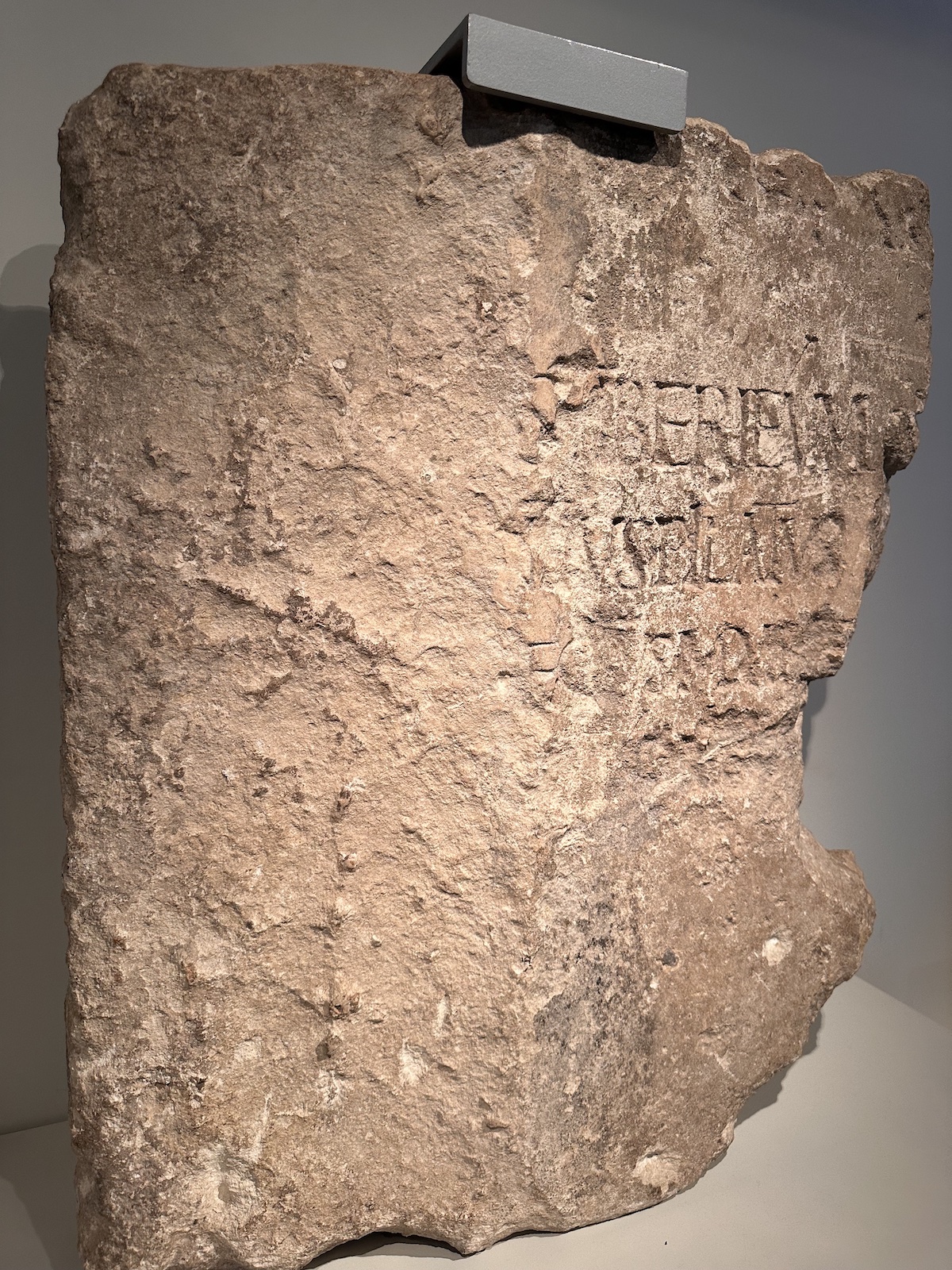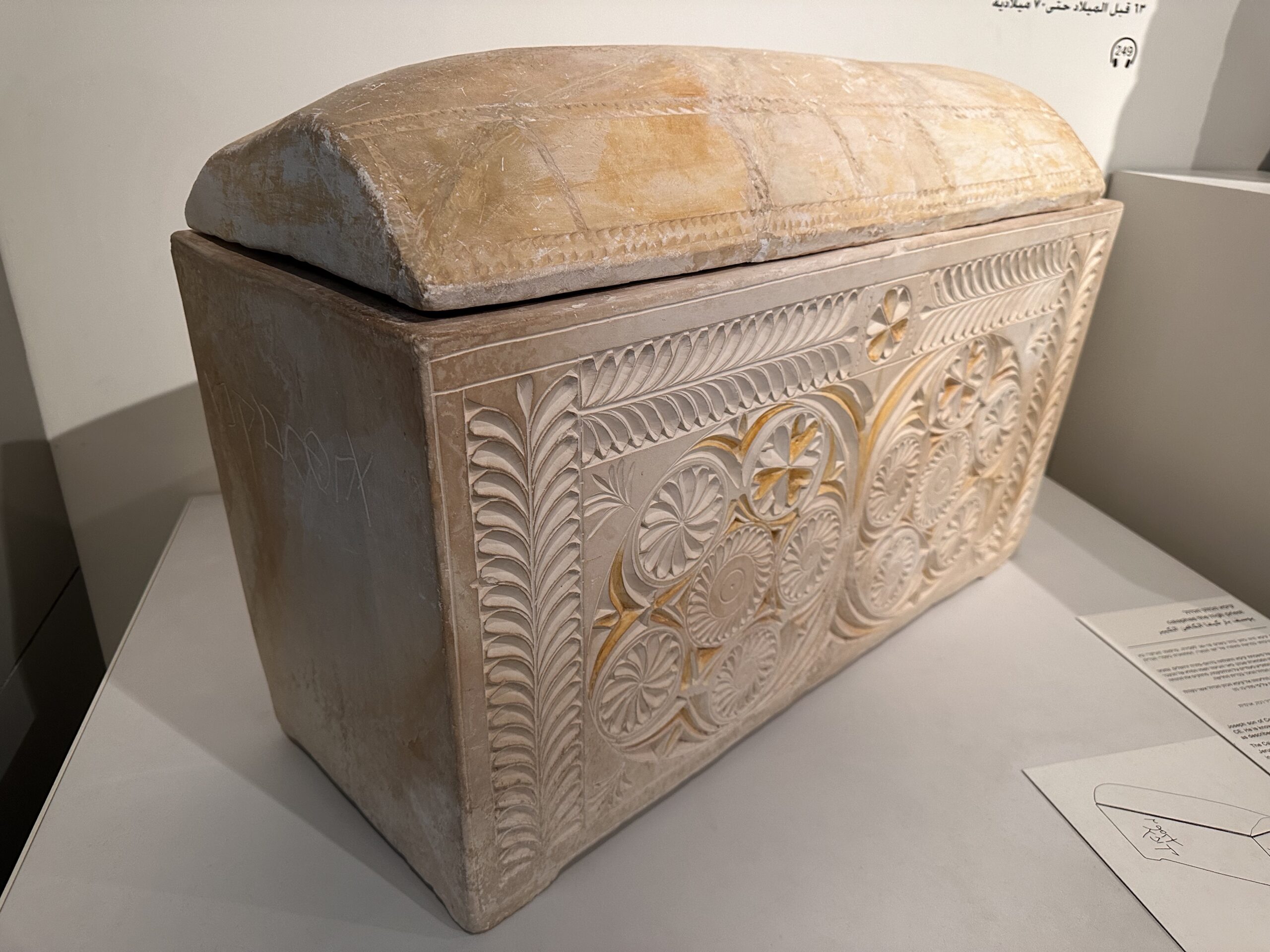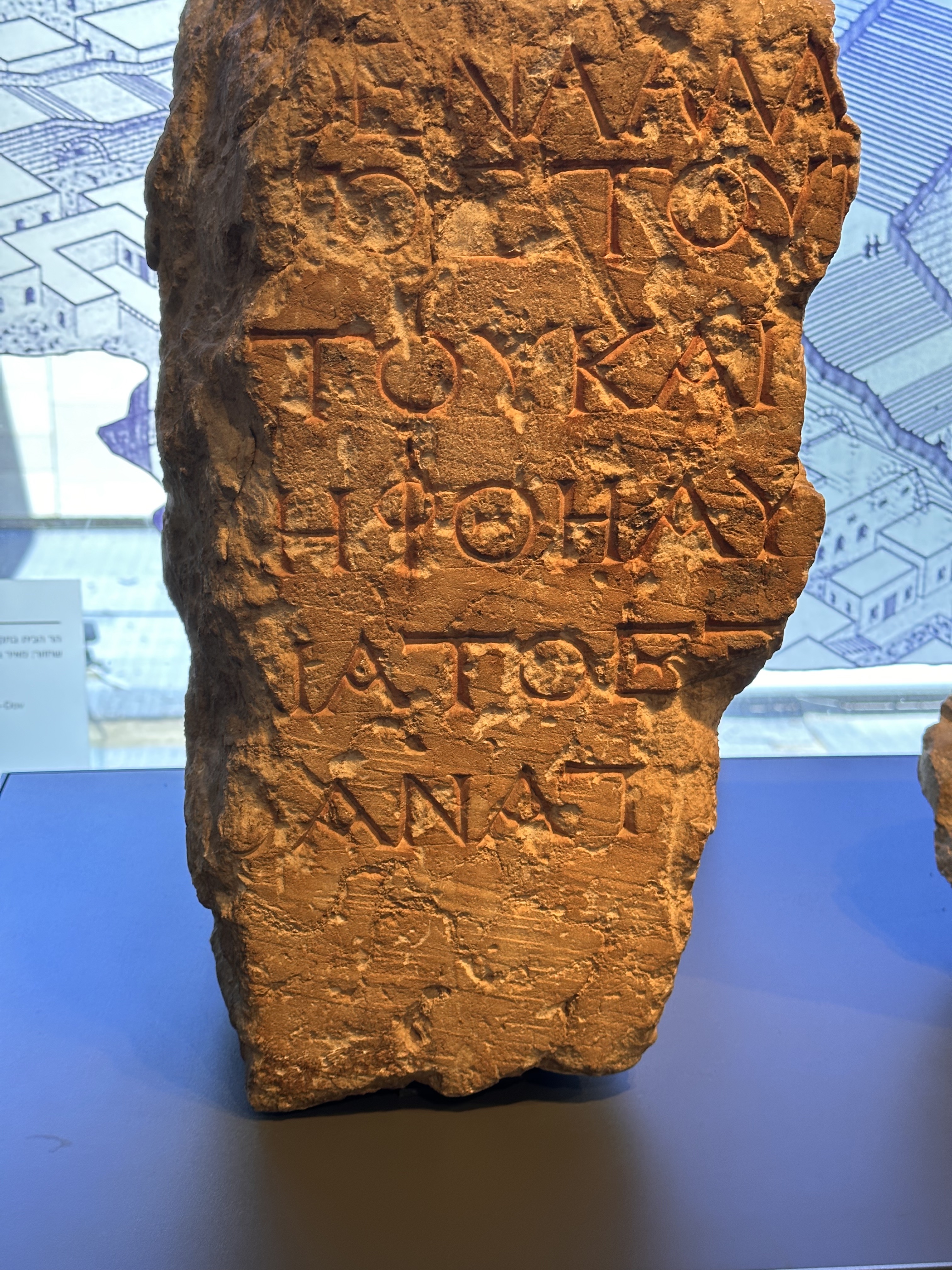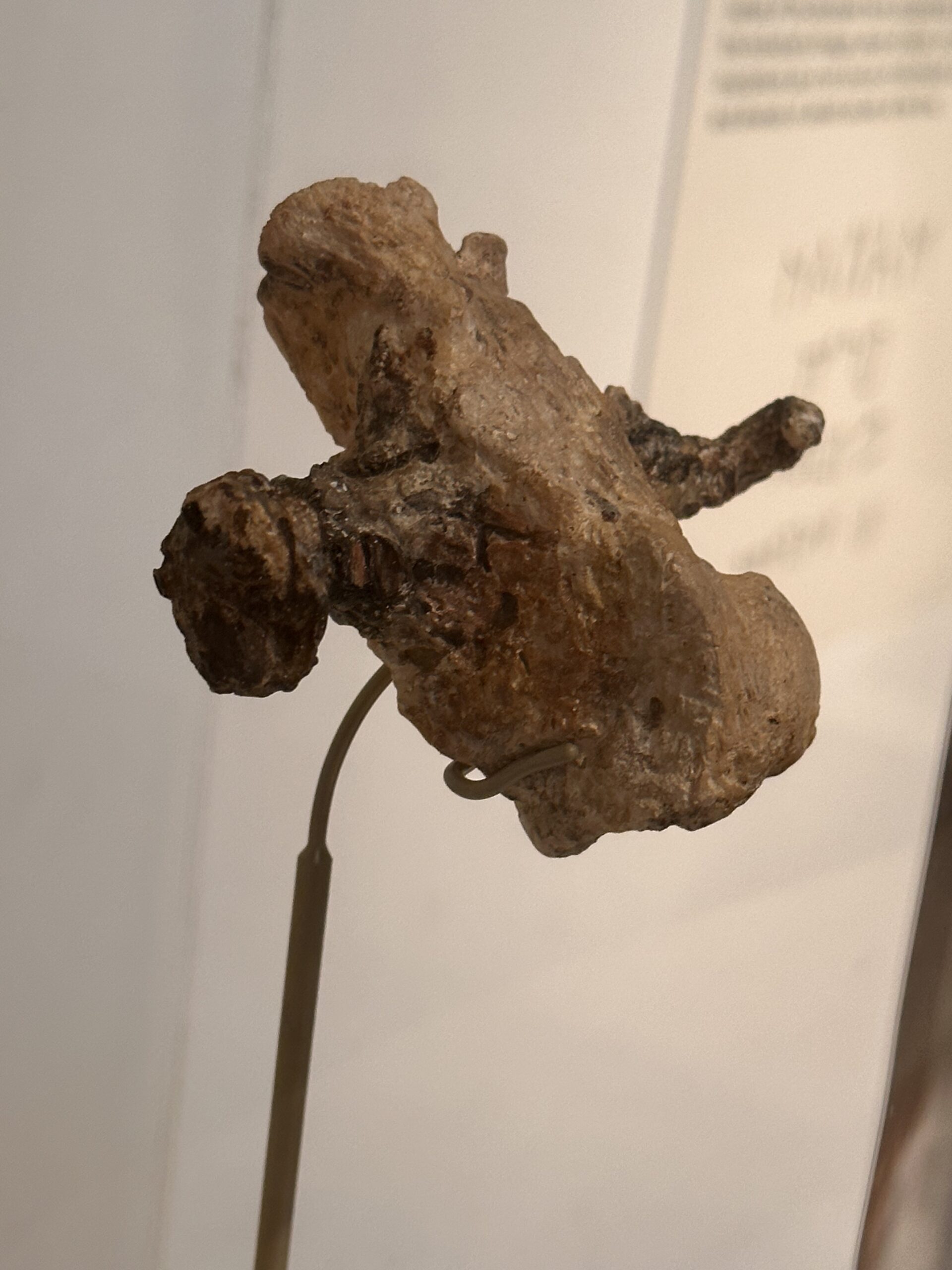The crucifixion of Jesus is the foundation event in every Christians life and has been a topic of discussion and debate for centuries. From a historical perspective, the question of whether the crucifixion of Jesus is a historical fact is a contentious issue. In this article, we will examine the evidence for the crucifixion of Jesus from both Christian and Jewish perspectives, including scriptural references, Jewish sources, and archeological discoveries related to crucifixion in the first century.
I. Scriptural References
The New Testament contains several detailed references to the crucifixion of Jesus, including first person accounts of the events leading up to and during the crucifixion. The following three verses provide examples:
Matthew 27:32-44 describes how the soldiers cast lots for Jesus’ garments, the mockery of Jesus by the crowds, and the crucifixion itself.
Mark 15:21-41 – gives account of the crucifixion of two other men alongside Jesus, the tearing of the temple curtain, and the events leading up to Jesus’ death.
John 19:16-30 is a detailed account of the crucifixion, including the inscription above Jesus’ head, the drinking of vinegar, and the piercing of Jesus’ side.
II. Jewish Sources
Jewish sources provide additional evidence for the crucifixion of Jesus, including references to Jesus’ execution by crucifixion. The following three sources are particularly relevant:
The Babylonian Talmud – This Jewish text, compiled between the 3rd and 5th centuries CE, mentions Jesus’ execution by crucifixion. While it does not provide a detailed account of the event, it confirms that Jesus was indeed crucified.
“On the eve of the Passover Yeshu was hanged. For forty days before the execution took place, a herald went forth and cried, ‘He is going forth to be stoned because he has practiced sorcery and enticed Israel to apostasy. Any one who can say anything in his favour, let him come forward and plead on his behalf.’ But since nothing was brought forward in his favour he was hanged on the eve of the Passover!”
(Sanhedrin 43a, Babylonian Talmud)
Josephus – Flavius Josephus was a Jewish historian who lived in the 1st century CE. In his work, Antiquities of the Jews, he briefly mentions Jesus and his execution by Pilate. While some scholars have disputed the authenticity of this passage, the majority of scholars agree that it is at least partially authentic.
According to the Testimonium Flavianum, “Now there was about this time Jesus, a wise man, if it be lawful to call him a man; for he was a doer of wonderful works, a teacher of such men as receive the truth with pleasure. He drew over to him both many of the Jews and many of the Gentiles. He was [the] Christ. And when Pilate, at the suggestion of the principal men amongst us, had condemned him to the cross, those that loved him at the first did not forsake him; for he appeared to them alive again the third day; as the divine prophets had foretold these and ten thousand other wonderful things concerning him. And the tribe of Christians, so named from him, are not extinct at this day.”
(Jewish Antiquities 18.3.3)
The Toledot Yeshu – This Jewish text, dating to the 4th or 5th century CE, contains a version of the Jesus story that is highly critical of Jesus and portrays him as a false prophet. Despite this bias, the text confirms that Jesus was crucified.
“And the hanged Yeshu cried out, saying: ‘Eli, Eli, lama sabachthani’ which means, ‘My God, my God, why have you forsaken me?’ And the men standing there thought that he was calling for Elijah. And one of them took a spear and thrust it into his side, and out flowed blood and water.”
(Toledot Yeshu, Chapter 6)
The Toledot Yeshu historical accuracy is questioned by scholars, but it does open a window into the Jewish-Christian relations leading up to the medieval period and the recognized crucifixion of Jesus Christ.
III. Archeological Discoveries
Archeological discoveries related to crucifixion in the first century provide additional evidence for the historical reality of the crucifixion of Jesus. The following three discoveries are particularly relevant:
The Pontius Pilate Inscription

The Pontius Pilate inscription was discovered in 1961 during excavations at Caesarea Maritima, an ancient Roman city on the Mediterranean coast of Israel. The inscription is a block of limestone with a dedicatory text that mentions the name of Pontius Pilate, who was the Roman prefect of Judea at the time of Jesus’ crucifixion. The inscription is written in Latin and reads: “Pontius Pilate, Prefect of Judea, has dedicated to the people of Caesarea a temple in honor of Tiberius”. The discovery of this artifact provided significant evidence for the existence of Pilate and confirmed details about his role as a Roman official in the region during the time of Jesus. The inscription is now on display at the Israel Museum in Jerusalem.
The Caiaphas Ossuary

The ossuary of Caiaphas, the High Priest mentioned in the New Testament, was discovered in 1990 in a tomb in southern Jerusalem. The ossuary, a small limestone box used for the secondary burial of bones, was found with six other ossuaries in a family tomb. The inscription on the Caiaphas ossuary reads “Joseph son of Caiaphas,” which matches the name of the High Priest mentioned in the Gospels who played a significant role in the trial and crucifixion of Jesus. The discovery of the Caiaphas ossuary provides archaeological evidence of the existence of this biblical figure and sheds light on the burial practices of the time. The ossuary is now on display at the Israel Museum in Jerusalem.
The Giv’at ha-Mivtar Inscription

The Giv’at ha-Mivtar Inscription was discovered in 1970 during excavations at an archaeological site near Jerusalem. The inscription is a text written in Hebrew on a limestone block and dates back to the 1st century CE, during the time of the Second Temple. The inscription contains a warning to non-Jews not to enter the inner courtyard of the Temple on pain of death. The text reads, “No foreigner shall enter within the forecourt and the balustrade around the sanctuary. Whoever is caught will be responsible to himself for the death which will ensue.” This discovery provided valuable historical and archaeological evidence of the strict regulations and tensions between Jews and non-Jews during the Second Temple period. The Giv’at ha-Mivtar Inscription is now on display at the Israel Museum in Jerusalem.
The heal bone of a crucified victim

In 1968, an archaeological discovery was made in a tomb near Jerusalem of the skeletal remains of a man who had been crucified. The bones belonged to a young Jewish man named “Yehohanan, the son of Hagakol.” The remains included an iron nail that was driven through the heel bone, indicating that the victim had been crucified. The bones also showed signs of a fracture in one of the victim’s legs, which was a common practice in Roman crucifixions to hasten death. This archaeological find provided valuable insight into the practice of crucifixion during the time of Jesus and confirmed the biblical account of the punishment. The bones are now housed at the Israel Museum in Jerusalem.
Conclusion
The crucifixion of Jesus Christ remains a significant event in history and a foundation event in the lives of every Christian. Despite centuries of discussion and debate, evidence from scriptural references, Jewish sources, and archeological discoveries support the historical fact that Jesus was crucified. The crucifixion of Jesus Christ continues to inspire and transform the lives of millions of people around the world, serving as a reminder of the sacrifice made for the salvation of humanity.
Additional Questions
When was the crucifixion of Jesus?
The exact date of Jesus Christ’s crucifixion remains a topic of historical debate, yet various historical facts may shed light on the matter. Jesus was born during the reign of Herod the Great, who passed away in 4 BCE. Therefore, to accurately calculate the date of Jesus’ crucifixion, it is crucial to understand when he was born. One possible clue regarding the timing of the crucifixion can be found in the Gospel of John, which suggests that Jesus was crucified on the day preceding the Passover Sabbath, which fell on Friday, April 3, in 33 CE. This date is based on a combination of historical and astronomical evidence, including the dating of Herod the Great’s death and the Jewish calendar. However, some scholars propose that the crucifixion could have taken place as early as 30 CE or as late as 36 CE. Therefore, the precise date may never be conclusively determined. Nevertheless, what is significant is that the crucifixion of Jesus Christ is a historical fact widely accepted by both Christian and Jewish scholars.
Who was at the crucifixion of Jesus?
The crucifixion of Jesus was witnessed by a number of individuals, including the Roman soldiers who carried out the execution, the Jewish leaders who condemned him to death, and a crowd of onlookers. The Gospels of Matthew, Mark, Luke, and John all provide accounts of the crucifixion and the people who were present.
- The Roman soldiers: Matthew 27:27-31, Mark 15:16-20, Luke 23:36-37, John 19:23-24
- The Jewish leaders: Matthew 27:22-25, Mark 15:11-14, Luke 23:18-23, John 19:6-16
- The crowd of onlookers: Matthew 27:39-44, Mark 15:29-32, Luke 23:35-38, John 19:23-24
- Mary, the mother of Jesus; Mary’s sister; Mary Magdalene; and an unnamed woman: John 19:25-26
- The disciple whom Jesus loved (traditionally identified as John himself): John 19:26-27
- Mary’s husband, Clopas: John 19:25
Where was the crucifixion of Jesus?
The crucifixion of Jesus took place outside the walls of Jerusalem, at a place called Golgotha, which means “place of the skull” in Aramaic. All four Gospels, Matthew, Mark, Luke, and John, agree on this location. John provides additional details, describing the place as a garden, and noting that it was near the city. Crucifying outside the city gate was a common practice in Roman crucifixions, as the goal was not only to execute the person but to do so in a public and humiliating manner as a warning to others. Crucifixions were often carried out on roads or other public places, and the Romans would have wanted to make an example of Jesus by crucifying him in a place where many people could witness his suffering. Additionally, Jewish law prohibited executions within the city walls, which is why the Roman authorities carried out the crucifixion just outside the gate. The Gospel of Hebrews states that Jesus was led to the place where the Romans executed criminals, further underscoring the public nature of his execution.
The recognized location would have been just north of Temple Mount outside of the gate in the second wall. The third wall was constructed after the crucifixion, leading modern tourists to question where the crucifixion took place. The Church of the Holy Sepulcher in Jerusalem is recognized historically as being the location of the crucifixion. In the lower parts of the church is an ancient stone quarry that was abandoned due to poor quality limestone. Mark 12 says “And have ye not read this scripture; The stone which the builders rejected is become the head of the corner: This was the Lord’s doing, and it is marvellous in our eyes?”
Who ordered the crucifixion of Jesus?
In the Gospel of Matthew, it is stated that the Jewish leaders, including the high priest Caiaphas, plotted against Jesus and ultimately handed him over to the Roman authorities to be crucified (Matthew 26:3-5, Matthew 27:1-2). The Gospel of Mark also identifies the chief priests and scribes as the ones who handed Jesus over to the Roman authorities (Mark 14:53-65, Mark 15:1). In the Gospel of Luke, it is written that the Jewish leaders brought Jesus before Pontius Pilate, the Roman governor, and accused him of inciting rebellion against Rome (Luke 23:1-5). Finally, in the Gospel of John, it is said that the Jewish leaders handed Jesus over to Pilate, who ultimately ordered his crucifixion (John 18:28-32, John 19:6). These scriptures provide strong evidence that the Jewish leaders played a central role in the crucifixion of Jesus, but that the actual order to carry out the execution came from the Roman governor, Pontius Pilate. The Bible states that Pilate even had a sign placed above Jesus’ head on the cross, which read “Jesus of Nazareth, the King of the Jews” in Hebrew, Greek, and Latin. The crucifixion of Jesus was therefore a result of both the political tensions of the time and the Roman practice of brutal punishment for those who opposed their rule.
Was Mary the mother of Jesus at the crucifixion?
There is strong evidence to confirm that Mary, the mother of Jesus, was present at the crucifixion. The Gospel of John specifically states that “Standing near the cross of Jesus were his mother, and his mother’s sister, Mary the wife of Clopas, and Mary Magdalene” (John 19:25). This passage suggests that Mary was indeed at the crucifixion, along with several other women who were close to Jesus. In addition, the fact that Mary is not mentioned in the Gospels as being elsewhere during the crucifixion lends further weight to the idea that she was present. It is also worth noting that Jesus himself specifically addresses his mother during the crucifixion, saying to her, “Woman, here is your son” (John 19:26). This statement suggests a close relationship between Jesus and his mother, and further supports the idea that Mary was indeed present at the crucifixion.
What books of the bible talks about Jesus crucifixion?
The crucifixion of Jesus is an event that is recounted in all four of the Gospels of the New Testament: Matthew, Mark, Luke, and John. Each Gospel provides its own unique perspective on the event, with varying levels of detail and different theological emphases. The accounts of the crucifixion in the Gospels are some of the most famous and powerful narratives in all of scripture, and have been a central focus of Christian theology and devotion for centuries.
Are there Roman records of Jesus crucifixion?
From a historical perspective, there are no surviving Roman records that specifically mention the crucifixion of Jesus. However, there are several references in the writings of ancient historians that suggest that the event did take place. For example, the Roman historian Tacitus, writing in the early second century CE, referred to Jesus as a man who was executed by Pontius Pilate, the Roman governor of Judea. Similarly, the Jewish historian Josephus, writing in the late first century CE, mentioned Jesus in his Antiquities of the Jews, stating that he was put to death by Pilate. While these sources do not provide detailed accounts of the crucifixion itself, they do provide independent confirmation of the historical reality of the event. Additionally, the biblical accounts of the crucifixion in the Gospels of Matthew, Mark, Luke, and John provide detailed descriptions of the events leading up to and including the crucifixion, offering insight into the religious and political context in which it occurred.
How long ago was the crucifixion of Jesus Christ?
The crucifixion of Jesus Christ took place over 2000 years ago. The exact date of the crucifixion is a matter of historical debate, but scholars generally place it between 30 and 33 CE based on biblical and historical evidence. The Gospels of Matthew, Mark, Luke, and John all provide detailed accounts of the crucifixion, including the events leading up to it, the crucifixion itself, and its aftermath. These accounts continue to be studied and analyzed by scholars and believers alike to gain a deeper understanding of the life and teachings of Jesus. The passage of time has not diminished the impact of Jesus’ sacrifice on the cross and its significance for Christians around the world. As the Apostle Paul wrote in 1 Corinthians 1:18, “For the message of the cross is foolishness to those who are perishing, but to us who are being saved it is the power of God.”
What happened three days after the crucifixion of Jesus Christ?
As detailed throughout the Gospels, three days after the crucifixion of Jesus Christ, he rose from the dead. This event, known as the Resurrection, is the cornerstone of Christian belief and is celebrated by Christians around the world on Easter Sunday. The Gospels of Matthew, Mark, Luke, and John all recount the Resurrection, with various details and perspectives. In Matthew 28, Mary Magdalene and another Mary go to visit the tomb where Jesus’ body had been laid, and they encounter an angel who tells them that Jesus has risen. In Mark 16, Mary Magdalene, Mary the mother of James, and Salome go to the tomb and find the stone rolled away and an angel who tells them that Jesus has risen. In Luke 24, two disciples encounter Jesus on the road to Emmaus, and later he appears to the apostles in Jerusalem. In John 20, Mary Magdalene goes to the tomb and finds it empty, and then encounters Jesus himself. The Resurrection is a pivotal event in the Christian faith and is seen as evidence of Jesus’ divinity and power over death.
References:
- Matthew 27:32-44 (New International Version).
- Mark 15:21-41 (New International Version).
- John 19:16-30 (New International Version).
- Sanhedrin 43a, Babylonian Talmud. Available at: https://www.sefaria.org/Sanhedrin.43a?lang=bi.
- Josephus, Flavius. Antiquities of the Jews. Book 18, Chapter 3, Paragraph 3. Available at: https://www.ccel.org/j/josephus/works/ant-18.htm.
- Toledot Yeshu, Chapter 6. Available at: http://www.earlychristianwritings.com/text/toledot.html.
- Vicens, F. (2018). “The Crucifixion of Jesus: History, Myth, and Debate”. Ancient History Encyclopedia. Available at: https://www.ancient.eu/article/1211/the-crucifixion-of-jesus-history-myth-and-debate/.
- Wylen, S. M. (1995). The Jews in the Time of Jesus: An Introduction. Paulist Press.
- Masada Archaeological Expedition. (1963). “Report of the Excavations of Herod’s Palace at Masada”. Israel Exploration Journal, 13(4), 209-228.
- Yardeni, A. (1997). “An Aramaic Prayer Inscribed on a Bowl from Masada”. Israel Exploration Journal, 47(1), 23-26.
- Pilate Stone (Inscription), Israel Museum.
- Pfann, S. (2004). “Crucifixion Nails and the Tomb of Caiaphas”. Biblical Archaeology Review, 30(2), 26-35, 70.
- Magness, J. (2018). “Caiaphas’ Tomb and the Pool of Siloam”. Biblical Archaeology Review, 44(3), 40-51.
- Vreeland, H. (2017). “The Giv’at ha-Mivtar Inscription: Earliest Historical Evidence for Jerusalem’s Temple”. Biblical Archaeology Review, 43(2), 54-65.
